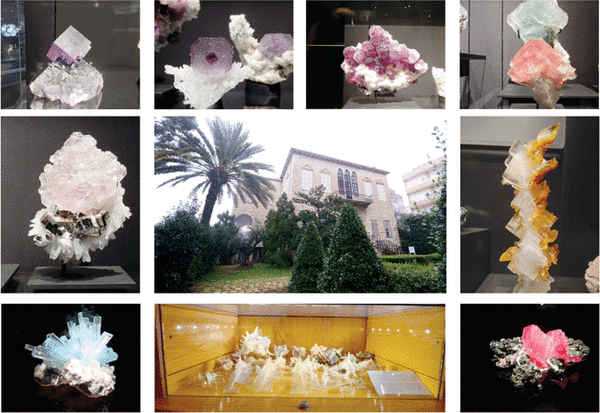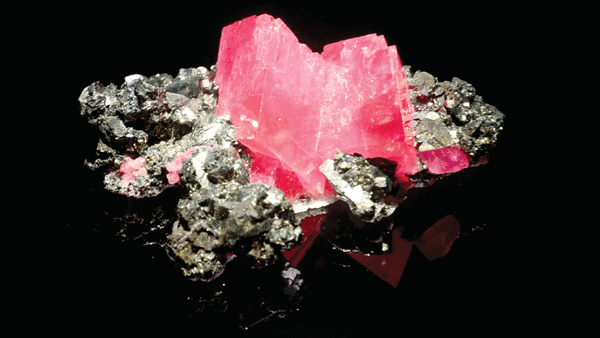


A number of specialised museums, most backed with private money and displaying private collections, have been popping up in Beirut, offering an instructive and cultural experience.
Among the best known are the Museum of Minerals — MIM — and the Les Merveilles de la Mer (The Wonders of the Sea). The oldest museum, Nicholas Sursock’s, dates from 1961 and hosts a permanent collection of Islamic artwork.
MIM, in the heart of Beirut, offers insight into a remarkable private collection of more than 1,650 minerals, one of the finest compilations worldwide in terms of variety and quality. Drawing its name from the phonetic pronunciation of the 24th letter of the Arabic alphabet (MIM) equivalent to the letter “M”, which is the first letter of the words museum, minerals and mines, the collection is the brainchild of Salim Edde.
“While I inherited my passion for collecting from my father, who collected oriental rugs and old coins, it is probably from my grandmother that I got the idea for the museum,” Edde said. “As the collection grew, I couldn’t stop thinking of what she often said of people accumulating material things: ‘My grandson, no one has ever taken anything with him (after death).’ Guided by her words, and in particular by a desire to share my passion with the greatest number of people, I began considering creating a museum of mineralogy in 2003.”
The museum came into being in 2013 at the Jesuit University, which had a display room on its campus. Stacked on two levels, it consists of several beautifully choreographed clusters. The atrium hosts a selection of minerals designed to give the visitor a taste of what comes after. The space unfolds into a large hall where each of the nine classes of minerals is represented by a single large piece. Interactive screens explain what a mineral is and how it is formed.
In the main exhibition area, specimens of some 380 different species of all classes are displayed. A special section has been devoted to radioactive minerals containing uranium and thorium, the two major radioactive elements found in nature. Then comes the trophy room, which has about 30 examples considered to be the best ex- amples of their species, including famous specimens that were purchased after fiercely competitive auctions.
Describing his fascination with minerals, Edde, a chemical engineer, said: “I have always been amazed by the variety of geometric forms of crystals and the perfection of the plane surface and the angles between them... these wonders of creation that have formed under the sole influence of temperature, pressure and the incredibly com- plex work of water and time.”
MIM is financed mostly by Edde and 15 per cent of the revenues come from ticket sales, a museum gift shop and renting space for events. “This imbalanced way of financing will undoubtedly have to improve in the future to keep the museum life sustainable in the long term,” Edde admitted.
MIM is definitely a museum with special mission, one to promote the historical, industrial and economic but also aesthetic aspects of mineralogy till now unknown in the world of museums.
About 7 km north of Beirut, in the suburb of Jdeideh, lies another hidden treasure — The Wonders of the Sea. Set within the traditional Lebanese house of Assaad Yaz- beck, the museum hosts a fantastic collection of seashells and species of marine life.
“The idea of turning this house into a museum was the brainchild of the whole family but the collection is entirely mine,” said the manager Jeanine Yazbeck, one of Assaad’s four grandchildren. “I have always been fascinated by the sea and have been collecting seashells since my early childhood.”
The site is magnificent with a beautifully maintained garden surrounding the big 19th-century house with its red-tiled roof. A massive centenary eucalyptus greets visitors at the entrance of the two-storey house where the first floor has been transformed into a large exhibition space. The extraordinary seashell collection is displayed in wooden and glass cases in a 15-metre-long central room. More than 3,000 shells of about 630 varieties are exhibited alongside red and blue coral from the Pacific Ocean and the Red Sea, as well as a collection of fossils. The shell collection includes different families, among which the cypraeidae (cowries) and conidae (cones) are the most popular.
Apart from the shells, the museum has aquariums. One holds a baby green sea turtle with a “congenital malformation that makes it vulnerable in front of her predators”, said Yazbeck. “I’ll keep it until it is mature and release it afterward. It will have more chance to survive in the nature.”
With schoolchildren as its main visitors, “the project has a target”, Yazbeck explained. “It is designed to make children aware that the oceans host an infinite number of magnificent living creatures that we have to protect.”
Also on display is a fun movie that shows various sea creatures eating, molting and giving birth. A big sign at the exit says: “If you like what you have seen, keep your sea clean.”
When I travelled to Lebanon in March 2023 I found out that unfortunately this superb museums had closed down.
Oman Observer is now on the WhatsApp channel. Click here



